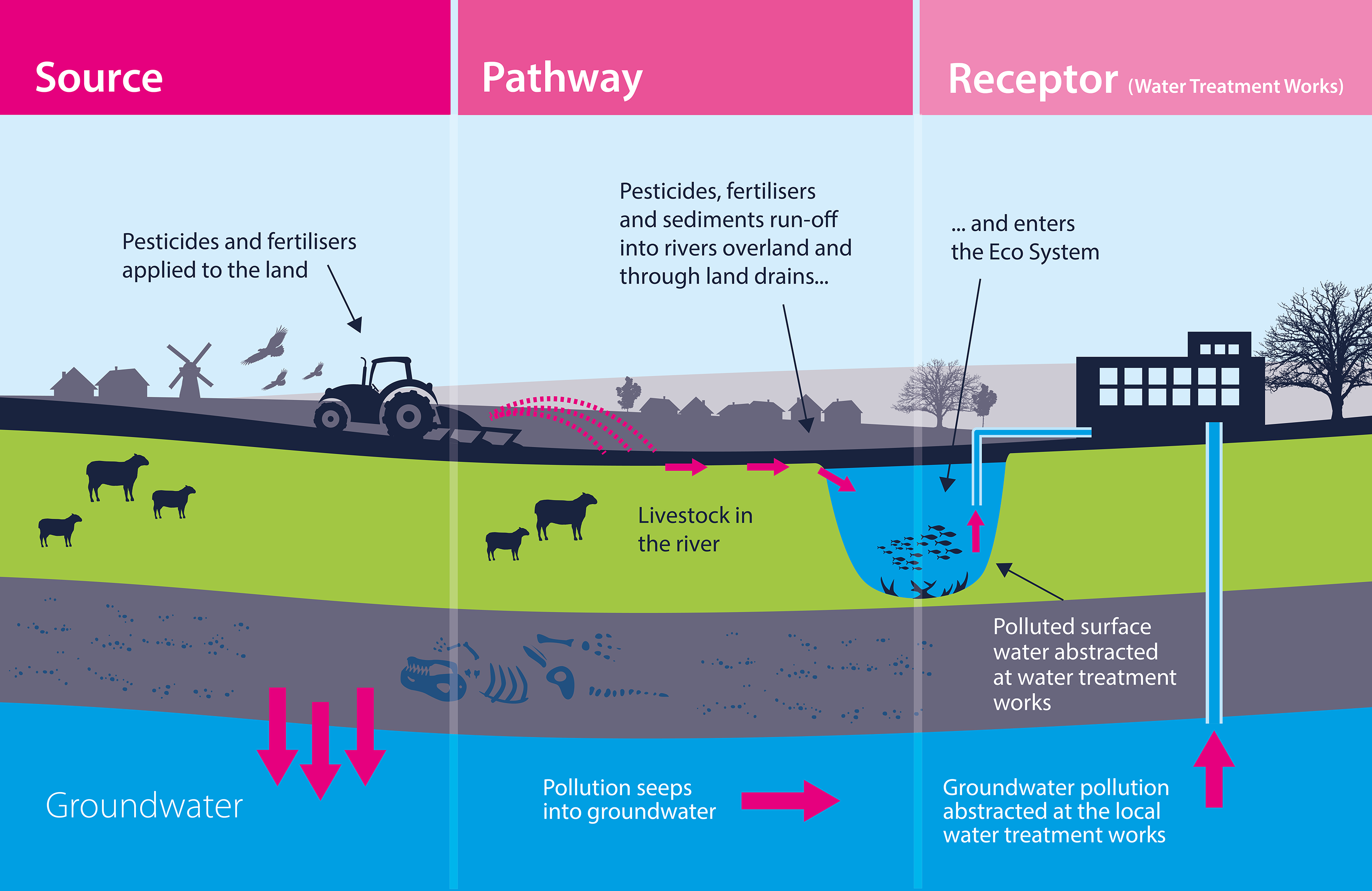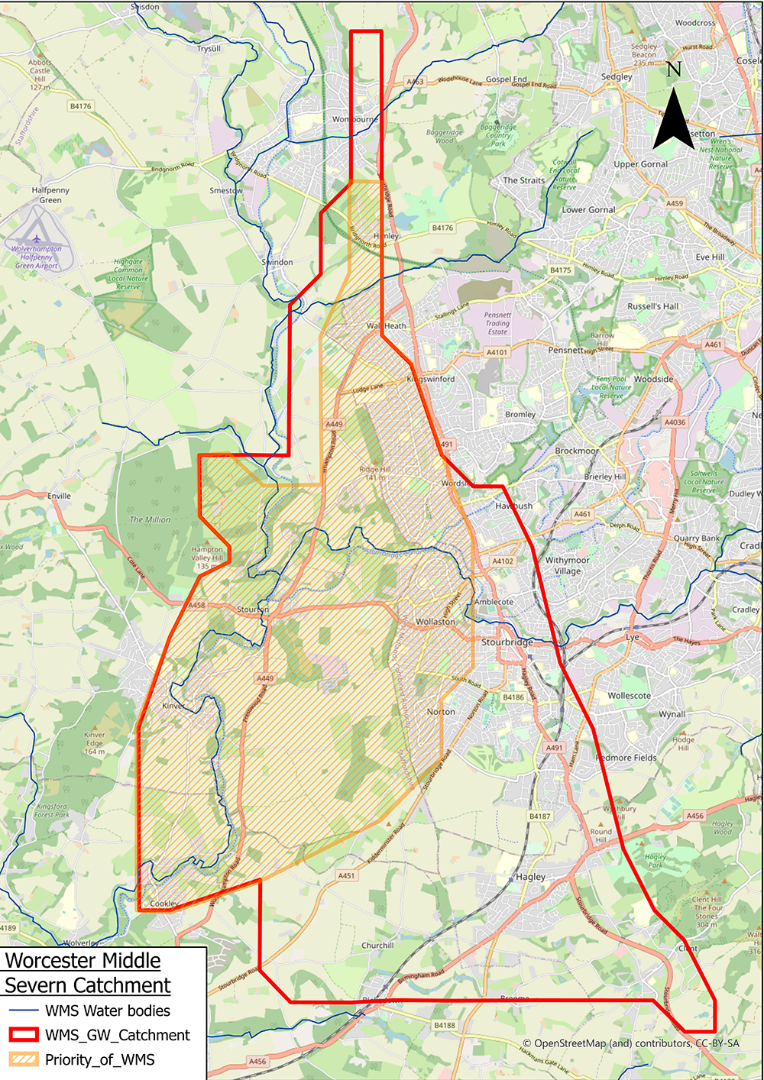In a catchment, rainfall that is not utilised by plants either infiltrates into the aquifer to become groundwater or continues on the surface as runoff, eventually flowing into surface water systems such as streams, rivers and lakes.
Our water supply is made up of both groundwater sources (boreholes) and surface water sources (rivers).
A catchment is a defined area of natural landscape that collects precipitation and contributes to a body of water, such as an aquifer or river.
The quality of this water can be affected by activity which takes place on the land and rivers that make up the catchment area. The catchment approach works on the model of source, pathway and receptor.
The catchment approach works on the model of source, pathway and receptor. Click to enlarge:


What's the quality of raw water like in the South Staffs region?
The quality of raw water in our region’s catchments is generally very good; however, there are some substances used in agriculture that prove persistent in the environment and pose a risk of exceeding the prescribed levels in raw water. This is why we are working collaboratively with landowners and farmers in priority areas on best practices and catchment improvements.
What are our long-term goals for managing the quality of raw water?
We aim to rely less on ‘end of pipe’ treatment solutions and more on catchment management to improve the quality of our water. Tackling problems at the source improves resilience for the future and allows us to be proactive rather than reactive. This approach is not only more cost-effective and sustainable but also delivers greater benefits to the environment and our customers.
Catchment management can also provide improved control over challenging chemicals that pose difficulties for treatment works by addressing these substances at their source and along their pathways.
How are we going to achieve this?
It is all about risk identification and then working with external and internal stakeholders to reduce those risks.
For more information, download our catchment management leaflet here.
Useful links
An industry-led programme that offers schemes, tools and messages to promote the responsible use of plant protection products through an IPM-based approach to sustainable agriculture.
Advice for farmers and land managers on how to improve water and air quality and reduce flood risk on agricultural land.
The Catchment Based Approach (CaBA) is an inclusive, civil society-led initiative that works in partnership with the Government, local authorities, water companies and businesses to maximise the natural value of our environment.